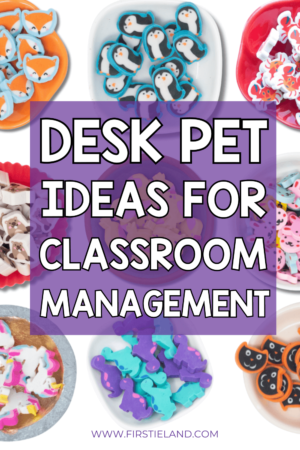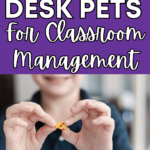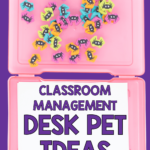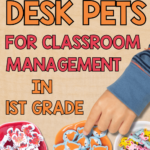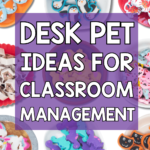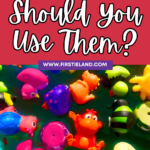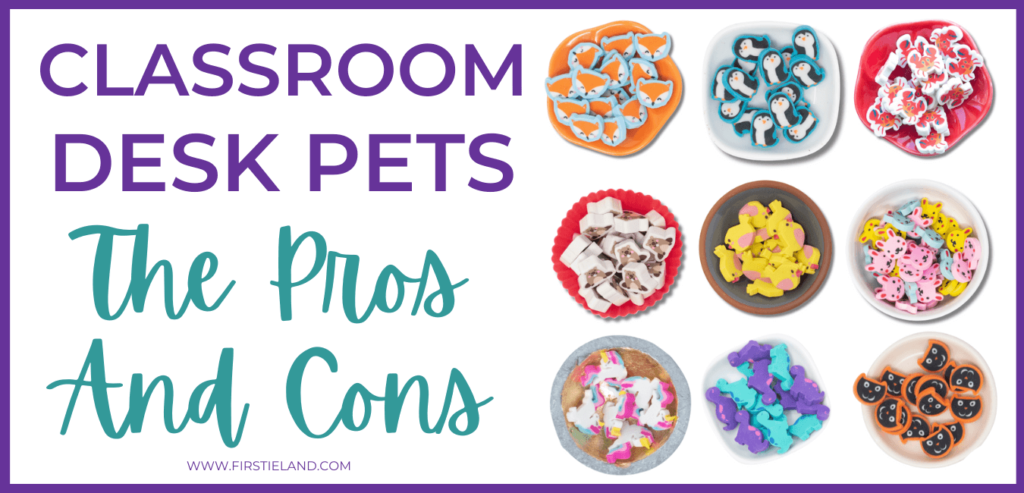
Should you use desk pets in a kindergarten or first-grade classroom? Teachers have recently introduced this creative and innovative approach to classroom management using miniature erasers or small toys as little pets. Let's take a look at some desk pet ideas, including the pros and cons of integrating desk pets into your classroom.
What is a desk pet?
A desk pet typically refers to a small object or toy that resembles a miniature animal or character. In kindergarten and first grade, desk pets are commonly represented by small erasers shaped like animals. These erasers can be found in the form of tiny dogs, cats, or other cute animals.
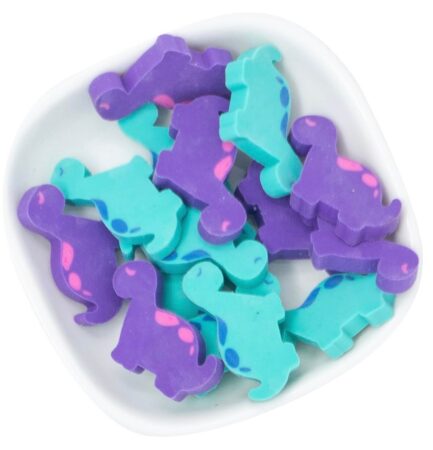
Teachers may choose desk pets that align with a particular theme or educational focus, such as animals related to a science unit or characters that tie into a specific lesson plan. The key is to make these small objects appealing to children and to create a positive association between the desk pets and good behavior in the classroom.
What is the purpose of desk pets in the classroom?
The point of desk pets in a kindergarten or first-grade classroom is to provide a creative and engaging approach to classroom management. Desk pets serve as small, tangible incentives and tools for positive behavior reinforcement. Desk pets can serve as a great incentive for good classroom behavior.
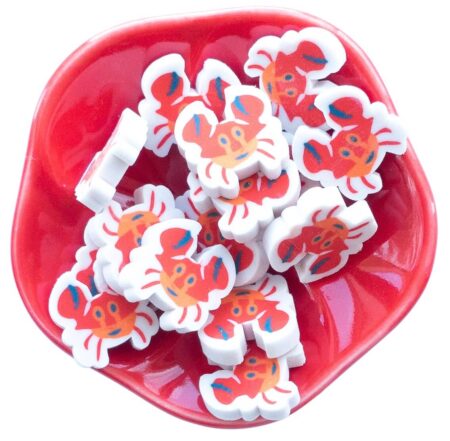
Desk Pet Ideas For Classroom Management
Starting a desk pet program in the classroom involves a few key steps to ensure its successful implementation. Here's a step-by-step guide with desk pet ideas to help you get started in kindergarten or first grade:
- Choose Desk Pets: Select a variety of miniature erasers or small objects that can serve as desk pets. Choose colorful, appealing shapes that will capture the interest of your students and that's cost-effective for you. Part of the appeal of mini erasers is that they are very inexpensive to purchase and easy to find. Consider themes that align with your curriculum or classroom goals when choosing your desk pets.
- Set Clear Goals and Expectations: Define the purpose of desk pets in your classroom. Clearly outline the goals you want to achieve and set expectations for how students can earn and interact with their desk pets. Ensure that the goals align with positive behavior reinforcement and classroom management. Make it clear to students how they should use their desk pets. For instance, children shouldn't be playing with their pet during work time.
- Introduce the Concept to Students: When you're ready to start, introduce the concept of desk pets to your students. Explain the purpose, how they can earn desk pets, and the responsibilities that come with having a desk pet. Make it an exciting and positive announcement to generate enthusiasm. It's a good idea to create rules about desk pets together as a class. Having your students help create and write the rules will make them feel more connected to the process.
- Create an Adoption Center: Establish a designated area in the classroom as the “Adoption Center.” This could be a table or a corner where students can “adopt” their desk pets. Consider adding creative elements like adoption certificates, small containers for the pets, or decorations to make it visually appealing.
- Develop an Adoption Process: Design a simple adoption process. This could involve students filling out a “desk pet application” where they express why they'd be a good pet owner. This is a great way to have students practice some writing and align your desk pets with your writing standards. Once approved, students can officially adopt their desk pets.
- Implement a Reward System: Decide on a reward system for earning desk pets. This could involve earning points for good behavior, completing assignments, or achieving specific goals. Establish a clear connection between positive behavior and the opportunity to adopt or interact with desk pets. Decide when students can shop at your pet store for accessories. The end of the day is usually a good time for shopping.
- Provide Desk Pet Accessories: Enhance the desk pet experience by providing accessories. This could include a small desk pet habitat, tiny containers, or other creative elements. Personalize the desk pet experience to make it unique for each student. You can make it as simple as having some small paper bags for students to decorate and this is where their desk pet can live.
- Consistent Implementation: Consistency is key to the success of desk pets. Ensure that you consistently apply the reward system and monitor student behavior. Be fair and transparent in your approach to avoid any confusion. There should be clear consequences if students are not using their desk pets appropriately.
- Evaluate and Adjust: Regularly evaluate the effectiveness of the desk pet program. Gather feedback from students and decide whether it is contributing to a positive classroom environment. Be open to making adjustments to the program based on your observations and feedback.
- Decide On Poor Behavior Consequences: Be aware that not all students will follow your classroom rules regarding their pets. Decide on how you will handle it if students are playing around with their pets when they should be working. Natural consequences are usually the best. For instance, if a student is playing with their desk pet during work time a great idea is to have a pet daycare center where pets can stay during work time if needed.
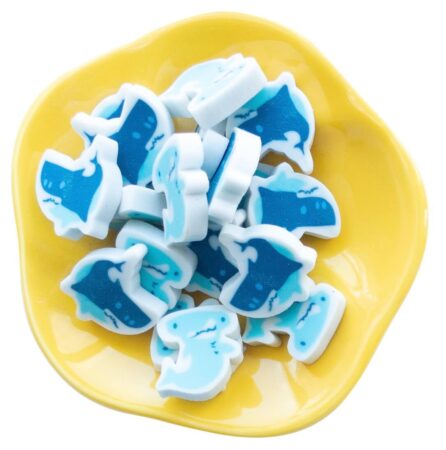
Want more ideas for classroom adoptions? Click below to take a closer look at how to Adopt A Peep and Adopt a Gingerbread Baby.
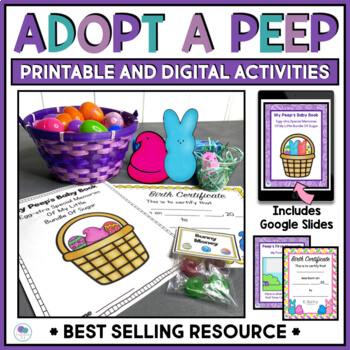
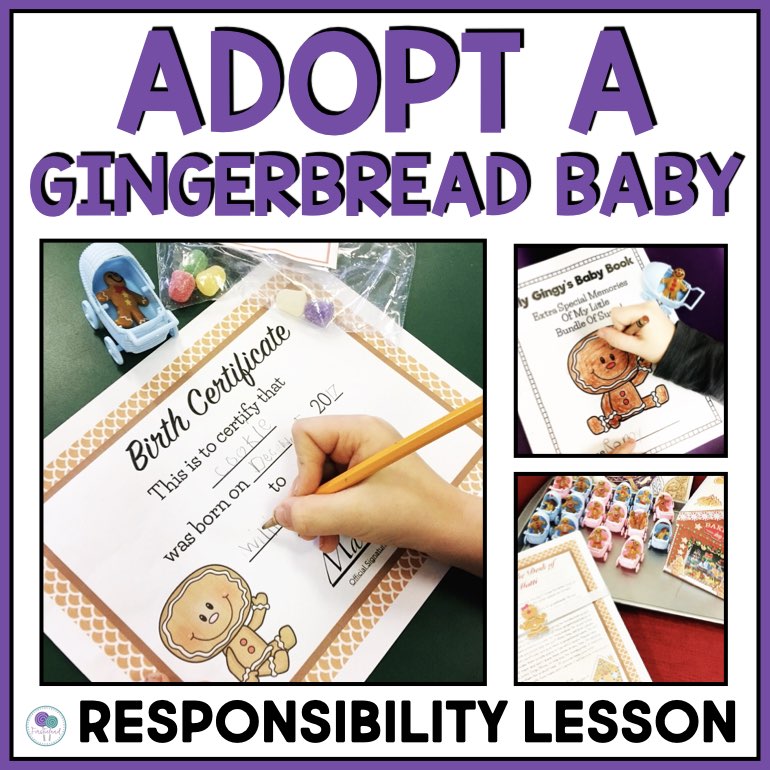
What are the positive benefits of using desk pets in the classroom?
- Foster Positive Behavior: Desk pets serve as a great way to encourage good behavior among kindergarten and first-grade students.
- Fun and Engaging Classroom Management Tool: Incorporating desk pets into your classroom provides a fun way to manage student behavior. The novelty of having a “pet” on their desks keeps the students engaged and motivated to exhibit good conduct.
- Budget-Friendly: Utilizing the Target Dollar Spot, Amazon, or Oriental Trading for mini erasers, also known as desk pets, can be a cost-effective way to implement this strategy.
- Creative Writing Opportunities: Desk pets can be used as prompts for creative writing activities. Encourage students to write stories or create characters based on their desk pets, fostering imagination and enhancing their creative writing skills.
- Classroom Community Building: Desk pets contribute to building a sense of community within the classroom. Students can share their desk pet experiences, creating a positive and collaborative environment.
- Flexible Use of Miniature Erasers: Miniature erasers, commonly found in dollar stores or the Dollar Tree, offer flexibility in their use. Beyond desk pets, mini erasers can serve as tools for math activities, manipulatives, or rewards for academic achievements.
- Learn About Money And Spending: By introducing a reward system such as desk pet dollars students can earn play money for positive behavior, creating a positive reinforcement strategy. Students can use the money to buy accessories and other fun items for their desk pet which can help students develop responsibility as they save their play money to buy things they'd like from your classroom pet store. You can fill your class store with inexpensive items such as small plastic containers that can serve as desk pet habitats. You can also add mini stickers that look like food for students to buy for their desk pets. Another fun accessory for students to buy is a personalized adoption certificate for their new desk pet.
- Effective Brain Breaks: Desk pets can be integrated into the classroom routine as a form of a brain break. Allow students a few minutes of free time to interact with their desk pets, promoting relaxation and a smooth transition between activities.
- Promotes Responsibility and Ownership: Assigning each student their desk pet fosters a sense of responsibility and ownership. This hands-on approach helps instill important values in younger students, teaching them to care for their “pets.”
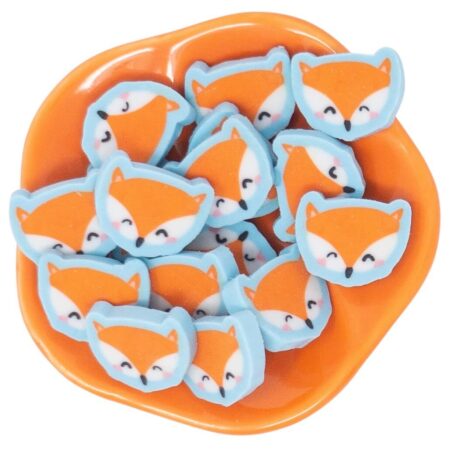
What are the disadvantages of using desk pets in the classroom?
- Potential Distractions for Younger Students: While desk pets can be engaging, they may become distractions for younger students who may find it challenging to focus on their academic tasks with a little pet on their desk.
- Risk of Lost or Damaged Mini Erasers: The small size of miniature erasers poses a risk of loss or damage. Teachers need to set ground rules and expectations for how students should care for their desk pets.
- Not Suitable for All Classrooms: Desk pets may not be suitable for every classroom setting. Teachers should consider the needs and dynamics of their specific class before implementing this strategy, especially in classrooms with special requirements.
- Potential for Inequality and Envy: Students may feel envious of their classmates' desk pets if they think they're more appealing or interesting. Some children may be jealous of others who are earning desk pet dollars for extra accessories. This could lead to a potential source of conflict among students.
- Time-Consuming: The adoption process, complete with applications and certificates, can be time-consuming. Teachers need to weigh the benefits against the time investment, especially during the hectic beginning of the school year.
- Potential for Disruption: The excitement surrounding desk pets may lead to disruptions as students interact with their pets during class time. Teachers must establish boundaries to prevent the pets from becoming a source of disruption.
- Loses Appeal With Older Students: While desk pets are ideal for first-grade classrooms, their appeal may diminish as students get older. Older students may find the concept too juvenile, making it less effective as a classroom management tool.
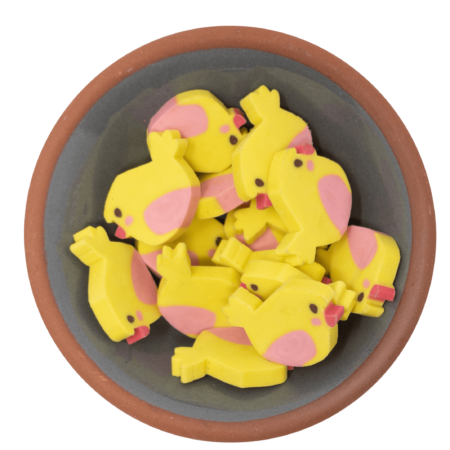
Desk pets can be a great addition to a kindergarten or first-grade classroom, offering a fun and creative approach to classroom management. By carefully considering these desk pet ideas, including the pros and cons, you can make an informed decision on whether to incorporate desk pets into your classroom. Remember that while desk pets can be a powerful tool for promoting positive behavior and a sense of community, they require careful planning, consistent implementation, and adaptation to the unique needs of each classroom.

ABOUT THE AUTHOR
Hi, I'm Molly, the creative mind behind Firstieland. With over 35 years of experience in early childhood education, I'm your primary support for resources that will save you time and make learning feel like play. Learn more about my mission for Firstieland here.
Looking for more ways to adopt pets in the classroom? Take a look at these posts:
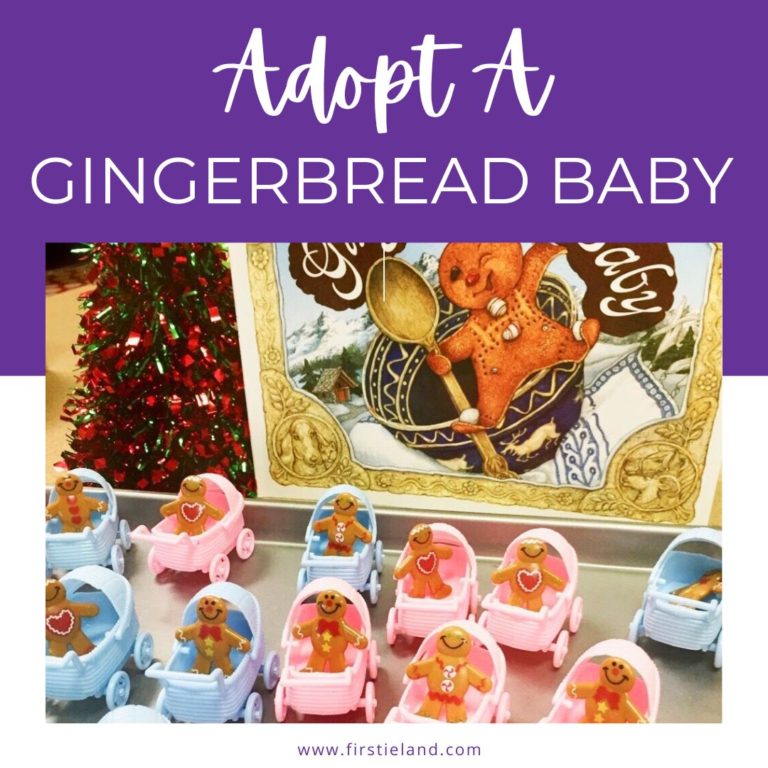
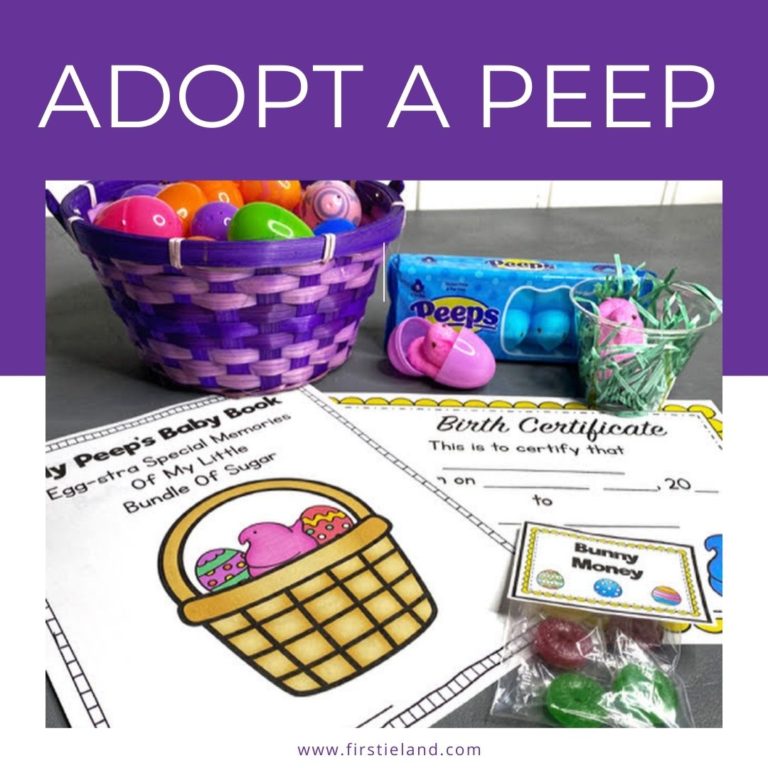
SAVE THESE IDEAS FOR LATER!
Take a minute to save these tips to your favorite morning meeting Pinterest board so you can remember them later!
